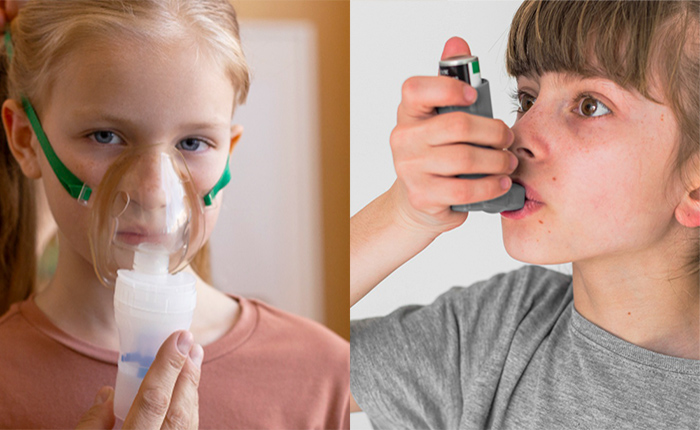Nebulizer vs. Inhaler: Which One is Better for Your Child?
March 25, 2025 2025-03-26 14:26
Nebulizer vs. Inhaler: Which One is Better for Your Child?
The information provided on this website is for educational and informational purposes only and is not intended as medical advice. We are not licensed medical professionals, and the content shared here should not be used to diagnose, treat, or replace the advice of your healthcare provider. Always consult your doctor or qualified medical professional before starting any treatment or using any medical devices. Follow your doctor’s instructions above all else.
When your child develops a cough or has difficulty breathing, many parents wonder:
Should I use a nebulizer or an inhaler? While both devices help deliver medication to the lungs, they work differently and serve different purposes. Choosing the right one depends on your child’s age, condition, and ability to use the device correctly.
In this article, we’ll explore:
✔ How nebulizers and inhalers work
✔ When pediatricians recommend a nebulizer
✔ How to make inhalation therapy easier for kids
1. How Do Nebulizers and Inhalers Work?
Both nebulizers and inhalers treat respiratory conditions, but they differ in how they deliver medication.
✔ Nebulizers turn liquid medication into a fine mist that a child inhales through a mask or mouthpiece. The child simply breathes normally while the mist is delivered over several minutes.
✔ Inhalers release a pre-measured dose of medication in the form of a spray or dry powder. To use them effectively, a child must inhale deeply at the right moment, which requires coordination.
Nebulizers are ideal for younger children and those experiencing severe respiratory symptoms, while inhalers are better suited for older kids who can follow instructions.
💡 Note: While nebulizers are highly effective, they are not always the first-line treatment. A doctor’s assessment is essential to determine if nebulized therapy is the best option.
2. When Do Pediatricians Recommend a Nebulizer?
Doctors often suggest using a nebulizer in the following situations:
✔ For infants and toddlers – Young children may struggle with inhalers, but nebulizers allow them to receive medication effortlessly.
✔ During severe breathing difficulties – If a child is wheezing or struggling to breathe, a nebulizer ensures they get the medication they need without effort.
✔ For chronic respiratory conditions – Children with asthma, bronchitis, or cystic fibrosis often need regular nebulizer treatments.
✔ When using certain medications – Some treatments, like mucus-thinning drugs or antibiotics, work best when delivered via a nebulizer.
If you’re unsure which device is best for your child, consult your pediatrician. They will recommend the most suitable option based on your child’s age and condition.
3. How to Make Nebulizer Therapy Comfortable for Kids
Many children feel uneasy about medical treatments, so making nebulizer therapy a calm and positive experience is key. Here’s how:
🐼 Use a child-friendly nebulizer – Fun designs (like pandas or bears) make the device less intimidating.
🎵 Distract with music or videos – Play their favorite cartoons or songs to keep them relaxed.
🎭 Turn it into a game – Pretend the mist is “superhero air” that gives them special powers.
🧸 Offer comfort items – Let your child hold a favorite toy or blanket during treatment.
A relaxed child is more likely to cooperate, making treatment more effective.
Search
Categories

